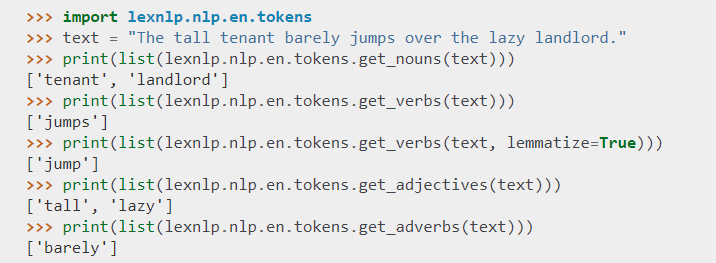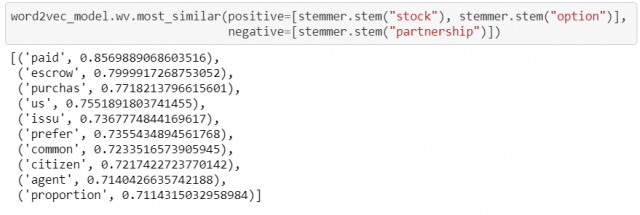Overview¶
LexPredict was first incorporated in 2013 as Quantitative Legal Solutions, a client service company. The company began developing its first software and data products in 2014, and re-branded to LexPredict that same year.
LexPredict is an enterprise legal technology and consulting firm, part of the Elevate family of businesses. Our personnel specialize in legal analytics, legal data science and training, risk management, and legal data strategy consulting. We work with corporate legal departments, law firms of all sizes, financial institutions, and other conglomerates to empower better organizational decision-making by improving processes, technology, and the ways people interact with both. We developed ContraxSuite to assist organizations with contract analytics and workflows, using the best machine learning techniques, as well as our own natural language library for legal-specific text, LexNLP.
Read on for more information about the different ContraxSuite solutions we offer, or navigate to any page in this documentation using the navigation pane on the left side of the screen.
Use Cases¶
ContraxSuite can extract information and build custom document analytics to solve a wide range of problems. It’s virtually impossible to create an exhaustive list of all of ContraxSuite’s use cases, but below we highlight some of the most common.
Contract Identification and Organization: Many organizations don’t know where all of their contracts are stored. ContraxSuite and LexNLP can help identify unstructured data from sources like shared drives, email accounts, and contract management systems, and then tag contracts for easy organization.
Contract Harmonization: There are many ways to write a clause, and there are even more ways to assemble several clauses into a contract. Contract clutter is a serious problem, and contract consistency is a must. ContraxSuite and LexNLP were built for contract harmonization projects. Match changes in historical paper or slice and dice contracts at the document, section, or clause level. LexNLP can quickly find outliers, anomalies, and other unique language or terms. When you’re done, you can then use ContraxSuite to help drive and validate convergence in ongoing contracting.
Due Diligence and M&A: Doing business around the world can be great. Missing laws, regulations, and gepolitical risks, on the other hand, is not great. LexNLP identifies risks in contract language, and when a little extra review is necessary, LexNLP can analyze communications and other documents, conducting pre-discovery, not just e-discovery.
Real Estate and Lease Abstraction: ContraxSuite and LexNLP can help make sure you understand the restrictions and terms across your real estate and lease portfolios.
Finance and Capital Markets: Identify key financial terms like currency amounts, percentages, rates, and ratios. Find transaction fees, borrowing spreads with LIBOR, Force Majeure clauses, and leverage ratios in warehouses. LexNLP can also process documents and agreements like offering and private placement memoranda (OCs, OMs, PPMs), ISDAs, CSAs, ED and PB agreements, and much more.
Supply Chain and Vendor Management: Sort through new risks and regulatory trends that emerge. Look for things like cyber insurance for Canadian vendors, BAAs for all US facilities, mandatory notice and cooperation clauses for FCPA violations, GDPR or CCPA frameworks, to name just a few examples.
Complaint and Settlement Analysis: Many organizations have massive amounts of unstructured data like demand letters, complaints, and settlement agreements. These documents are not usually searchable or structured, but they contain a trove of valuable data. Tools like LexNLP can uncover and organize this treasure trove, and build strategic analytics to support practices like product liability, professional liability, and labor and employment.
Lease Accounting: Using LexNLP, alongside machine learning tools combined with pre-trained financial and accounting models, you can quickly classify leases and lease terms like term, maintenance, transfer, and purchase rights.
ContraxSuite Solutions¶
For many years, ContraxSuite has helped law firms, law departments, legal services providers, and enterprise organizations efficiently review and analyze their contracts to gain important insights.
As an enterprise user of the closed-source ContraxSuite product, your server has several different modules for creating and managing projects.
Extraction & Analysis¶
ContraxSuite Extraction & Analysis module provides users with the full feature set and frontend (ReactJS) functionality of ContraxSuite’s AI platform. The following capabilities overview is not extant:
For Document Reviewers:
Triage contracts and other documents using Batch Analysis and clustering
View Data Entities, values that ContraxSuite extracts from uploaded documents
Manually change, add, or delete annotations, and use this data for machine learning training
Search documents using either full-text search, or regular expressions
For Project Managers:
Assign documents to reviewers for easier workflow
Create custom Document Types for your reviewers
Create custom Document Fields for your reviewers
Create custom Document Field Detectors for Document Fields you’ve created
For Power Users/Administrators
Integrate visualization tools (e.g., PowerBI, RShiny)
Integrate document management tools (e.g., Salesforce, iManage, HighQ, MS Azure, SharePoint, NetDocs, Box, etc.) via API
Configure your ContraxSuite server using the Django Admin interface
For Data Scientists:
Create custom machine learning algorithms
Utilize ML model-building techniques, such as word2vec and doc2vec
Document Explorer¶
The Document Explorer allows users to upload documents, extract data, and view that data. Technical Admins, Project Managers, and other power users of ContraxSuite will have access to the ContraxSuite Document Explorer. Throughout this User Documentation, there will be outlines of processes and tasks that can be conducted in the Document Explorer. Visit the “What Is Legal Analytics?” for a prelude to the general information and instructions regarding the Document Explorer.
LexNLP¶
Click here for LexNLP documentation
LexNLP™ by LexPredict is the leading open source information retrieval and extraction tool for real, unstructured legal text. LexNLP is for developers and other parties who need to solve problems involving contracts, plans, policies, procedures, and other material. Developers and other parties can use LexNLP to build their own solutions, or extract custom data from legal or financial documents. Corporate legal departments, law firms, financial institutions, publicly-traded companies, insurance companies, accountants, and auditors can all benefit from LexNLP.
Within ContraxSuite, LexNLP is used to extract Data Entity values and populate Document Fields. These include, but are not limited to, the following types of data:
Segmentation and tokenization of common legal abbreviations like “LLC” and “F.3d”, and common legal concepts like pages, titles, and sections
Pre-trained word embedding and topic models, broadly and for specific practice areas
Pre-trained classifiers for document types and clause types
Tools for building new clustering and classification methods
Hundreds of unit tests from real legal documents
Broad range of Data Entities that can be extracted from legal domain-specific text, such as:
Monetary amounts, non-monetary amounts, percentages, ratios
Addresses, parties, persons, companies, telephone numbers, and email addresses
Conditional statements and constraints, like “less than” or “later than”
Dates and durations, including effective dates, termination dates, and delivery dates
Terms, notice periods, or assignment delays
References to citations or regulations like “26 U.S.C. 501,” “26 CFR 31.3121,” and “655 F.3d 1013”
Controlling law and jurisdictions
Copyrights and trademarks
Phrasal definitions like “Default shall mean…”

Code example for LexNLP’s legal domain-specific terms
Extract Financial Terms¶
Financial terms, regardless of regional or jurisdictional variants:
Monetary and non-monetary amounts
Currency symbols and abbreviations
Geopolitical entities and distances
Percentages, rates, ratios, and proportions

Code example for LexNLP’s financial terms
Tokenization and Segmentation¶
Other natural language libraries struggle with headings and sections, or they stumble over common abbreviations like “U.S.C.” LexNLP tokenizes and segments, leaving nothing behind:
Pages, paragraphs, and sentences
Tokens, stems, and stopwords
Titles, articles, sections
Exhibits and schedules
Tables of contents

Code example for LexNLP’s tokenization and segmentation
Clustering and Classification¶
LexNLP can cluster and classify data in intuitive ways:
Sentences, paragraphs, clauses, sections, and documents
Documents as legal or non-legal material
Documents as financial or non-financial material
Contracts among various contract types
Clauses among various clause types
Synonyms or related concepts, via deep semantic models

Code example for LexNLP’s word2vec classification models
LexNLP is available to organizations through a range of options, including an open source version available under the terms of the Affero General Public License (AGPL). Read the AGPL license here.
LexNLP is also available under a dual-licensing model. Organizations can request a release from the AGPL terms or a non-GPL evaluation license by contacting LexPredict at license@contraxsuite.com.